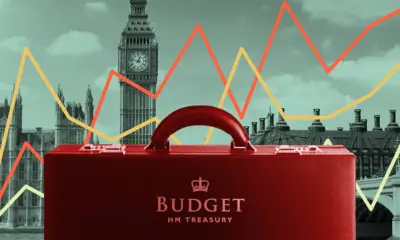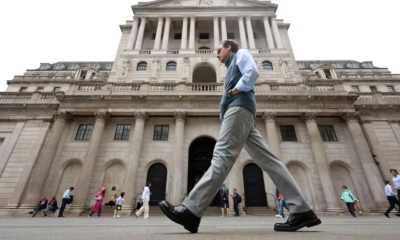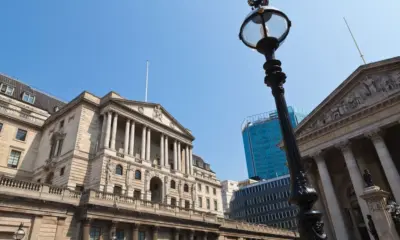Business
London Financial Hub Faces Inflation Pressure

London, long considered Europe’s financial heartbeat, is under renewed strain as inflationary pressures persist across major sectors. The Bank of England’s decision to hold interest rates steady has done little to ease concerns among investors and policymakers who fear prolonged cost escalation will erode both household spending and corporate margins. The United Kingdom’s service-driven economy, which relies heavily on financial and professional services, is finding itself at a crossroads between curbing inflation and sustaining growth.
Analysts note that while headline inflation has gradually declined from its 2023 peaks, core inflation in the UK remains significantly above the Bank’s 2 percent target. This has pushed the central bank into a delicate balancing act: tightening monetary policy could stifle growth, but loosening it too soon risks reigniting price spirals that would undermine market confidence.
London’s Financial Districts Feel the Squeeze
In the City of London and Canary Wharf, financial institutions are experiencing higher operational costs due to wage adjustments and elevated rents. Large banks and asset managers have reported that maintaining hybrid work infrastructure and regulatory compliance expenses are contributing to cost pressure. Meanwhile, small- and medium-sized firms are being hit harder, with several boutique financial services companies relocating back-office functions to lower-cost regions in Europe.
A recent report by the Office for National Statistics shows business input costs rose by nearly 5 percent in the past quarter alone. This inflation in the cost of doing business threatens to reduce the competitiveness of London’s financial hub against emerging European centers such as Amsterdam and Frankfurt, both of which continue to attract talent and fintech startups.
Investor Confidence Remains Cautiously Stable
Despite the turbulence, investor sentiment has not collapsed. Global capital inflows into UK-based funds remain relatively steady, supported by the resilience of the pound and the ongoing strength of the service sector. However, the appetite for high-risk investments has waned. Analysts say hedge funds and private equity groups are favoring short-term, yield-bearing assets over speculative ventures.
The London Stock Exchange has witnessed a cautious revival of IPOs, but deal sizes remain smaller compared to pre-pandemic averages. International investors continue to view London as a stable yet increasingly expensive marketplace. Many cite policy uncertainty and post-Brexit trade frictions as continuing barriers to a more robust recovery.
Policy Responses Aim to Balance Growth and Price Stability
The government’s latest economic strategy emphasizes “targeted fiscal restraint” combined with productivity-boosting measures in digital finance and infrastructure. Fiscal incentives for green technology and fintech innovation are being expanded to attract sustainable capital flows, while maintaining fiscal discipline to prevent overheating.
The Treasury has also initiated new consultations on improving access to long-term financing for businesses, particularly through securitization and digital bond issuance. These policies are designed to improve liquidity in domestic markets without significantly increasing fiscal risk.
Economists argue that a coordinated policy response is essential. The Bank of England, Treasury, and regulatory bodies must align on interest-rate signals, public investment, and financial oversight to avoid sending mixed messages to investors. A fragmented approach could prolong uncertainty and limit the effectiveness of inflation-control efforts.
Global Factors Intensify Inflation Dynamics
External shocks continue to influence UK inflation trends. Energy markets remain volatile due to supply disruptions and ongoing geopolitical tensions in Eastern Europe. The weakening of global trade networks and currency volatility, particularly against the U.S. dollar, have raised import costs for both goods and financial services.
Additionally, the UK’s reliance on imported raw materials and components has kept producer prices elevated. While commodity prices have softened slightly since mid-2025, lingering disruptions in logistics and high global freight charges continue to feed inflation at multiple levels of the supply chain.
A Slow Return to Stability
Economists predict that inflation may ease toward the Bank of England’s target by late 2026 if monetary and fiscal policies remain synchronized. However, structural challenges persist. Wage growth remains strong, housing supply is tight, and the fiscal burden of maintaining public services continues to weigh heavily on the national budget.
London’s financial hub is expected to retain its global prominence, but firms will need to adapt to tighter margins, stricter oversight, and shifting investor expectations. Resilience will depend on diversification expanding beyond traditional finance into digital assets, sustainable investment, and technology-driven platforms.
As policymakers and investors navigate the complex path toward stability, London remains a barometer of global economic health. Its ability to manage inflation while sustaining innovation will define not only its financial credibility but also its role in shaping the next phase of European economic recovery.




















